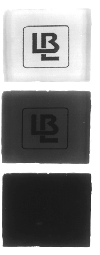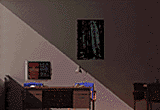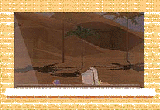Electrochromic Materials
Electrochromic Materials
How They Work

Electrochromic glazings have great potential to improve the energy efficiency and occupant comfort afforded by architectural windows. These smart windows can dynamically control light transmission by windows in buildings, automobiles, and aircraft. Electrochromic glazings are the most significant members of a family of chromogenic light-control technologies that includes large-area dispersed liquid crystals, dispersed particle windows, and photochromic and thermochromic materials. Electrochromic devices represent the most versatile window technology of this type, exhibiting the best combination of switching properties for chromogenic window applications.
Electrochromic glazings typically have a change in visible light transmission from 10% to 70%, moderately fast switching times, and low dc power consumption. These glazings have memory, so they only need power to make a change in transmission. Electrochromic technology can be coupled with smart control systems to give constant lighting levels, blending artificial lighting with daylighting for improved building energy efficiency. Energy simulations of office buildings, below, indicate that smart windows with lighting controls in arid climates can provide 30-40% energy savings over conventional windows. Savings are realized in cooling, lighting, and peak utility electric loads. Other benefits include smaller heating, ventilating, and air-conditioning (HVAC) systems and greater thermal and visual comfort.
In this section is an image of an LBL electrochromic window, showing the bleached condition, intermediate coloration, and fully colored (top to bottom). The window is constructed of thin films of tungsten oxide and lithium nickel oxide laminated with a polymer ion conductor. The visible transmittance range is Tv = 0.68-0.10 and solar transmittance range is Ts = 0.47-0.07.






